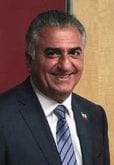Iranwire – Last week, Iranian media reported the opening of the first women’s emergency center in the city of Piranshahr.
Farzin Rezazadeh, the head of the Emergency Department in West Azerbaijan province, vowed to launch a second such center in the near future, with women occupying all technician positions, except for the ambulance driver.
Meanwhile, Jafar Miyadfar, the head of the Tehran Emergency Department, announced that 200 women will soon graduate in emergency medicine. The plan is to utilize these graduates to expand women’s emergency departments across the country.
But given the resources available in the Tehran Emergency Department, is it a wise idea to impose gender segregation in the emergency medical services?
To address this question, IranWire interviewed two former and current employees of the Tehran Emergency Department who wished to remain anonymous.
***
The discussion around gender segregation in the emergency services is not new. In September 2021, Ghafoor Rastin, the head of the Isfahan Emergency Department, announced a plan to introduce ambulances for women in the emergency department of Isfahan province.
It was decided that these “special ambulances for women” would be launched in the major provinces of the country and would be manned by women.
An employee of the Tehran Emergency Department told IranWire: “Currently, there are seven active bases dedicated to providing emergency services to women in Tehran City. These bases are located in the east, south and west of Tehran and are operating for 12 hours a day.”
Miyadfar, the head of the country’s emergency department, also stated that these bases are planned to operate for 12 hours every day, from 8 p.m. to 8 a.m.
But the employee of the Tehran Emergency Department asked: “Does this mean that we have no female patients from 8 p.m. to 8 a.m.? Aren’t women supposed to receive emergency care during these hours?”
The employee also expressed concerns about the condition of Tehran’s worn-out ambulances, in which two female technicians accompany a driver in women’s emergency cases.
The front cabin has seating for the driver and one additional person, with the second technician sitting in the back seat. Patients and their families have complained about the insufficient or weak air conditioning in the ambulances.
“In the summer heat, individuals sitting in the back seat during a mission can feel unwell. Sending three people on a mission in an ambulance is not suitable,” the employee said.
The employee stated that authorities seem to prioritize the satisfaction of a small percentage of government supporters and leaders, without considering the practicalities.
Regarding the accommodation facilities for emergency technicians, the employee noted that the shelters are located in municipal facilities, including fire stations or municipal gardens.
These shelters consist of two rooms and a toilet, but they are worn out due to their age. This indicates that the country’s Emergency Department lacks funding to replace both the ambulances and the deteriorating shelters. The employee mentioned that the Tehran Emergency Department currently has 229 bases, but some of them are inactive due to insufficient facilities and staff.
Mojtabi Khalidi, the spokesperson for the Tehran Emergency Department, has stated that “in Iran, there is one ambulance for every 50,000 people,” whereas international standards recommend having at least one ambulance for every 12,000 people.
Khalidi acknowledged the shortage of ambulances, saying that “emergency ambulances arrive at the scene of serious accidents after 11 minutes on average.” “The delay caused by the lack of ambulances results in the deaths of thousands of injured people every year,” he added.
Naser Abdulahi, the director of the Piranshahr Health Network, stated during the opening ceremony of the first women’s emergency department in the city that women would be utilized for specific missions and specific locations such as women’s swimming pools and women’s hair salons.
But according to a former technician from the Tehran Emergency Department, having women working alongside male colleagues is beneficial.
“If the men’s base is closer to a swimming pool or hair salon, should we wait for the women to arrive? This issue undermines the principles of speed and urgency in delivering [emergency] services.”
“Now they say that emergency teams with women should not be dispatched to boys’ schools – except elementary schools…But what if an incident occurs at a boys’ high school located just 100 meters away from the women’s base?” the former technician also asked.
“Or imagine a scenario where a man has a heart attack near the women’s emergency department. Should we wait for an ambulance to come from a more distant location, while women are closer and available? Isn’t that gender discrimination against men?”
The employee from the Tehran Emergency Department said that, on average, 30 percent of emergency calls in Tehran are made by female patients, adding “I’ve never heard a patient complain about male emergency technicians.”
“In my opinion, this plan is not sustainable, even if it is implemented,” the former technician said. “The country’s emergency department lacks the means to implement this plan, but it advertises it to please religious groups close to the government and secure additional funding.”
 Shabtabnews In this dark night, I have lost my way – Arise from a corner, oh you the star of guidance.
Shabtabnews In this dark night, I have lost my way – Arise from a corner, oh you the star of guidance.



